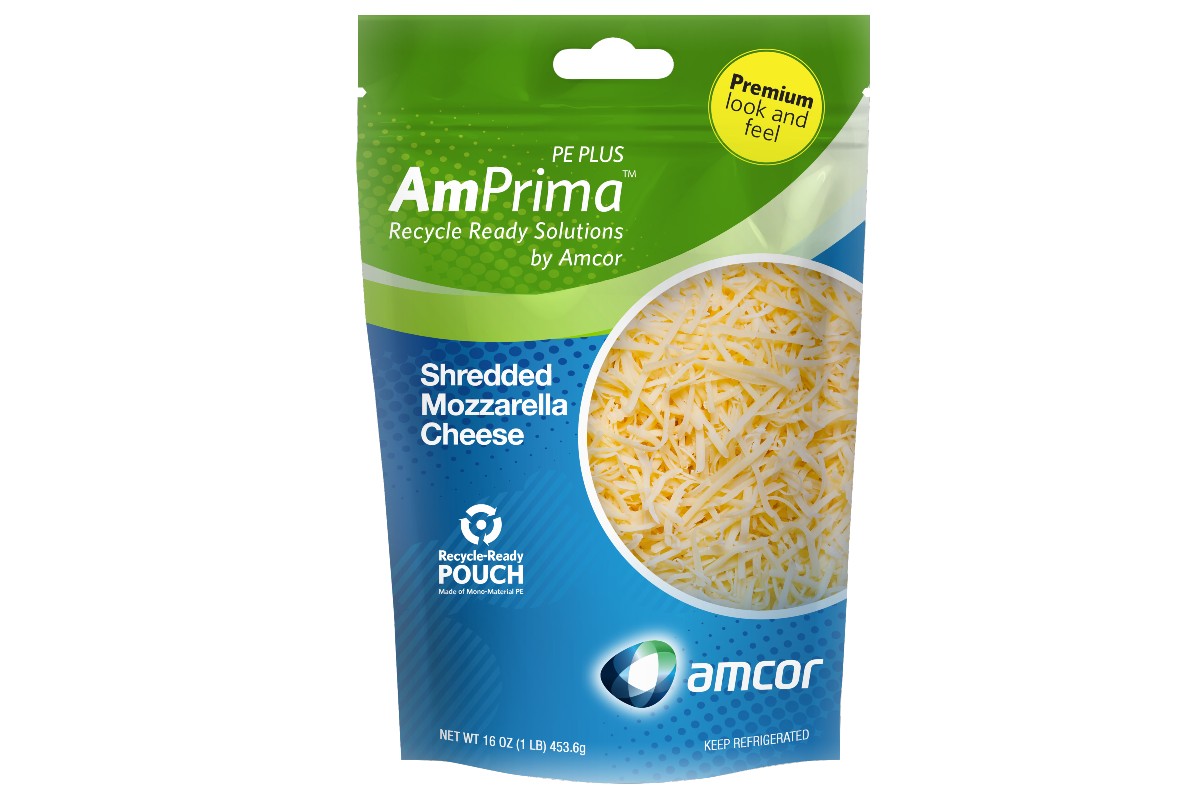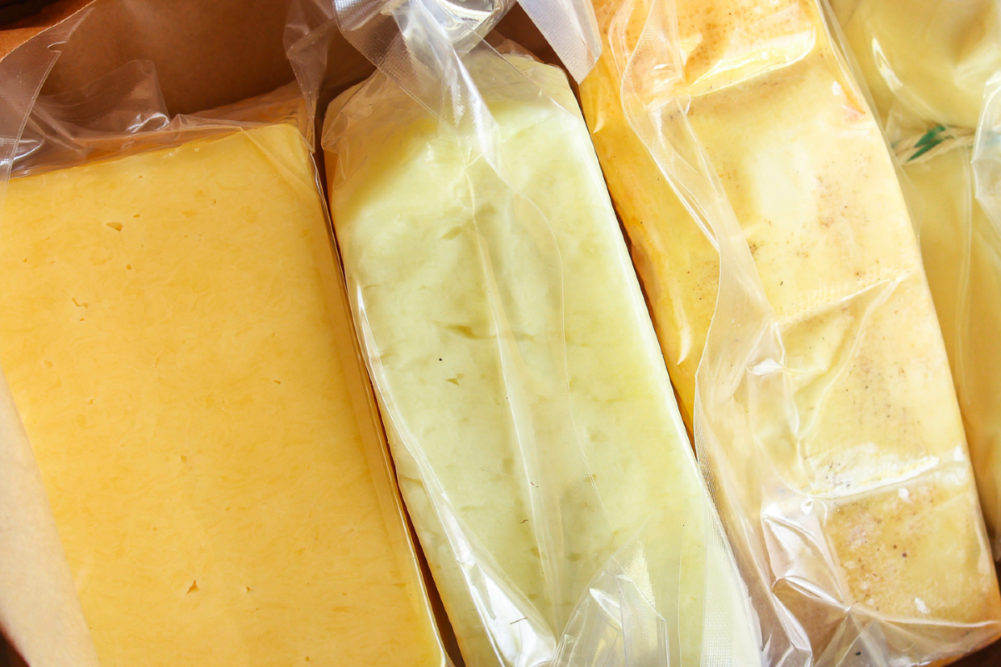Challenges from supply chain bottlenecks to the proliferation of end products on the market present manufacturers of cheese packaging opportunities to deliver innovative solutions for the complexities they face in the marketplace today.
Sales of cheese products in the United States surged during the pandemic to reach $28 billion in 2020 and an estimated $29 billion in 2021, according to Chicago-based market researchers Mintel and IRI. Prior to the pandemic, the category spent several years of sales in the range of $23 billion.
Despite forecasts for this growth to level off, the cheese category is still expected to clear $25 billion in sales this year and be stronger than it was before the pandemic. Post-pandemic consumers might look to cheese less as a recipe ingredient going forward, but they will continue to look to the category for a healthier snack option, per Mintel.
New packaging on the market
In this environment, cheese brands will need packaging partners that can help them differentiate their various snacking products on the market.
The newest cheese packaging innovation from Winnipeg, Manitoba-based Winpak is its ReFresh product line, which includes sustainable options in a predominately mono material. These products have performance attributes similar to Winpak’s standard cheese packaging.
Darin Gregg, Winpak’s dairy market director, said the company has been investing significantly in cheese packaging. This investment includes initiatives in forming and non-forming structures, as well as vertical and horizontal structures.
The customer’s packaging equipment also remains top-of-mind during the development process for such products.
“It is not only important for these materials to be recycle-ready and have lower greenhouse gas emissions compared to standard structures, but it is also important for these materials to run at production speeds on our customer’s existing packaging equipment,” Gregg said.
Travis Klug, marketing manager for dairy with Zurich, Switzerland-based Amcor, said end consumers are looking for portability and convenience functions in cheese products that allow for on-the-go eating, which includes features such as easy opening and reclosing.
Additionally, Klug said retailers have added grab-and-go sections to their delis that offer pre-packaged bags of sliced meats and cheeses that aid in convenience by preventing consumers from having to wait in the deli line.
“This has created a resurgence that is bringing people back to that area of the store where retailers can drive more profit as opposed to having to purchase from the retail shelves with lower price points and greater competition for share,” Klug said.
To this end, Amcor uses a thin film technology that develops products designed to mimic the appearance and feel of existing poly bags and improve shelf-life performance. These products come in both pre-made pouches and rollstock films.
Amcor’s newest cheese packaging products are the AmPrima PE Plus offerings. Klug said they ensure film clarity and allow consumers to see the cheese inside the packaging while still maintaining a surface that allows for complex graphics and print finishes. The packaging has the strength to enable the product to stand up on the shelf while also providing the heat resistance necessary to allow for fast line speeds so brands can meet demand and control costs.
“Both recycle-ready structures and the inclusion of recycled content result in a reduction of energy and greenhouse gas emissions,” Klug said of the products. “On-pack claims to promote these improvements also help to build greater brand equity with consumers who are interested in more sustainable packaging.”

Klug said Amcor’s inclusion of recycled content in films also has helped reduce its carbon footprint, and the company is working with industry organizations to support infrastructure and technology for the recycling of consumer packaging.
Amcor also offers an overwrap for string, stick and snack bars that is designed for the toughness, strength and good seal characteristics necessary for high-speed production lines. The company’s 40-lb block tubestock offers material and labor savings and reduced environmental impact, Klug said.
Abbie Ansburg, marketing communications manager for Montreal-based TC Transcontinental Packaging, said the company has introduced two new sustainable cheese packages, one being a post-consumer recycled film for shredded cheese and the other being a recycle-ready overwrap for fresh cheese.
The puncture-resistant film is made with up to 35% post-consumer resin and is useful in stand-up pouches. The overwrap is a recyclable non-barrier secondary package made from polyethylene and is pre-approved by the Sustainable Packaging Coalition for the How2Recycle label, a labeling system that communicates recycling instructions to the public.
Joel Schmidt, general manager for ePac Flexible Packaging’s Middleton, Wis., facility, said the company offers connected packaging that helps personalize engagement with customers, verify authenticity and trace products. He also said the company’s digital printing is more energy-efficient than traditional printing, and waste is reduced through their efforts to eliminate packaging obsolescence. The company also offers several sustainable material options, including PCR films and in-store recyclable films. Compostable films are currently in development, and the company expects to introduce a cold seal product this year in addition to exploring lidding film technologies, Schmidt said.
Opportunities for future innovation
As the number of cheese products on the market increases, Klug said Amcor is investing in technologies to support shorter run times that will help address the challenges that have resulted from a proliferation of SKUs in the marketplace. He said digital printing also has allowed for greater customization and design flexibility and allows brands with numerous SKUs to react quickly to the market.
Given the proliferation of products, Klug said it is increasingly important that brands develop unique shelf-appeal characteristics for their products. He said finishing technologies including matte and antiglare printing are becoming increasingly popular with their customers as they seek to win share in the market by making their products stand out on the shelf. As a result, he said Amcor is investing in equipment to support the growth of these technologies, with the goal of helping brands achieve differentiation at the point of sale.
As an overarching factor impacting all manufacturing industries, the supply chain also presents pressures for producers of cheese packaging. Klug said barrier packaging for dairy products has been challenged by shortages of raw materials. Amcor is working to develop solutions for these challenges including evaluating alternatives to barrier requirements for cheese packaging.
Combining food safety, functionality and sustainability is another goal of innovation.
“The main challenge in producing recycle-ready cheese packaging is to ensure, above all else, that the packaging meets food safety requirements in terms of protection and barrier,” Gregg said. “Once that is achieved within the parameters of ‘recycle-ready,’ the focus is on creating structures with similar operating performance characteristics as our standard structures.”
Gregg said the polymer science and film extrusion technology required to create such structures is extensive and requires the dedicated efforts of the company’s technical team.
As consumers look to cheese as a healthy and convenient snacking option, brands are seeking packaging suppliers that can deliver products with sustainable characteristics, all while being compatible with their existing equipment.

